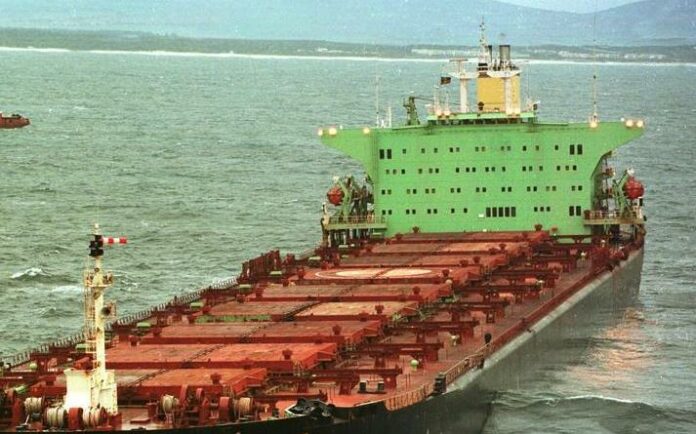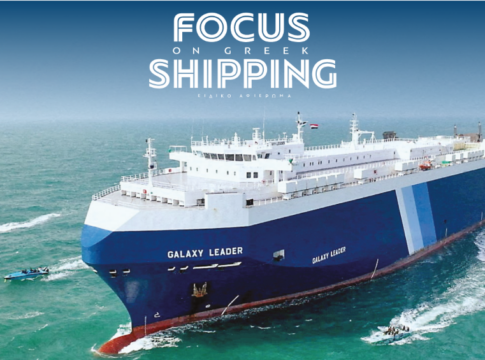In 2017, the tragic losses of M/V Stellar Daisy, carrying an iron ore cargo, and M/V Emerald Star, with a nickel ore cargo, raised questions of structural integrity and safety condition of high density cargoes carried on board. These two bulk carrier casualties caused the loss of 32 seafarers, the highest annual loss of lives since 2011. The industry expects that the full investigation reports will provide answers to the questions and highlight the lessons to be learnt. This edition of the Bulk Carrier Casualty Report covers reports bulk carrier casualties from 2008 to 2017 and provides an analysis on statistics and trends over the last 10 years. Fifty three (53) bulk carriers over 10,000 dwt have been identified as total losses over the years 2008 to 2017. Cargo shift and liquefaction continue to be a great concern for the life of seafarers and the safe carriage of dry bulk cargoes over this period. Those 9 casualties of suspected cargo failure consisted of 6 bulk carriers carrying nickel ore from Indonesia, 2 vessels with laterite (clay) iron ore from India and 1 with bauxite from Malaysia, and there were 101 lives lost associated with the 9 casualties of cargo failure against a total of 202 lives for all the 53 casualties. In 2017, the INTERCARGO database recorded 337 bulk carrier incidents, including the 2 casualties of M/V Stellar Daisy and M/V Emerald Star. Serious concerns arose on the safe carriage of ammonium nitrate based fertiliser, following the incident of the high temperatures in the cargo holds and the release of gases from the cargo on the 57,000 dwt supramax MV Cheshire in August 2017. Bulk carrier owners are confused with the existing individual schedule for AMMONIUM NITRATE BASED FERTILIZER (non-hazardous) in the IMSBC Code which covers a wide range of different fertilizers with the safety requirements varying depending on their specific properties, types and compositions. The shipping industry welcomed the issuance of the IMO circular CCC.1/Circ.4 on “Carriage of AMMONIUM NITRATE BASED FERTILIZER (non-hazardous)” on 22 Sept 2017; however bulk carrier owners and masters are expecting a prompt legislation process to develop adequate mandatory safety requirements to avoid recurrence of the M/V Cheshire and M/V Purple Beach incidents. Lessons learnt from past incidents play an important role in determining where additional safety improvement is necessary. The importance of flag States’ timely submission of casualty investigation reports to IMO should be stressed, as a means for identifying the cause of incidents and enabling corrective actions to be taken.
The IMO GISIS database showed by end January 2018 that 29 investigation reports of 53 losses had not been submitted to IMO by their flag States. Some details further highlight the issue of slow reporting:
- The highest loss of life has been attributed to cargo failure (liquefaction), totalling 101 lives lost from the 9 casualties during 2012 and 2015. Three (3) investigation reports of those 9 cases have not been submitted to IMO.
- The most common reported cause of ship losses has been grounding, totalling 22 losses among the 53 cases. Ten (10) investigation reports of those 22 cases have not been submitted to IMO.
- Six (6) ships lost with unknown causes claimed 61 lives. Five (5) investigation reports of those 6 cases have not been submitted to IMO.
- Reported flooding led to losses of 8 ships and 14 lives. Five (5) investigation reports of those 8 cases have not been submitted to IMO. INTERCARGO stresses the importance of timely submission of the casualty investigation reports to IMO from relevant flag States, as a means of identifying the causes of the incidents and enabling corrective actions.
Flag State Performance – Report of Investigation submitted to IMO’s Global Integrated Shipping Information System (GISIS)
Lessons learnt from past incidents play an important role in determining where additional safety improvement is necessary. At the end of Jan 2018, 24 of the 53 bulk carrier losses in this analysis have had investigation reports made available on IMO GISIS (https://gisis.imo.org/ Public/Default.aspx), representing 45.3%. The average time from incident to a report becoming available has been 21.8 months for these investigations. The following is an analysis of flag State reporting on the casualties identified that have been made available on the IMO GISIS database.
Casualty list
Between January 2008 and December 2017, fifty three (53) bulk carrier casualties have been identified as total losses and are listed in the following pages of this report.
The Equasis website, IMO GISIS and other public sources were used to compile the data contained within this report. Due to the limited information available it is likely that errors exist, and consequently readers and users of this report, seeking confirmation regarding the accuracy and/or updates of the compiled data, are recommended to contact the relevant shipowners and flag States.
*While this report has been developed using the best information currently available, it is intended purely as guidance and is to be used at the user’s own risk. No responsibility is accepted by INTERCARGO or by any person, firm, corporation or organisation who or which has been in any way concerned with the furnishing of information or data, the compilation, publication or authorised translation, supply or the sale of this report, for the accuracy of any information or advice given herein or for any omission here from or for any consequences whatsoever resulting directly or indirectly from compliance with or adoption of guidance contained herein. © INTERCARGO 2018
Analysis of total losses for previous ten years 2008 to 2017
- 53 bulk carriers over 10,000 dwt have been identified as lost, or on average 5 ships per year.
- 202 crewmembers have lost their lives as consequence, or on average 20 lives lost per year.
- 24.2 years was the average age of the bulk carriers lost. ? 2.77 million dwt have been lost, or on average 276,508 dwt per year
- The highest loss of life has been attributed to Cargo failure (liquefaction), totalling 101 lives lost or 50.0% of total loss of life resulted from the 9 casualties.
- The most common reported cause of ship losses has been Grounding, totalling 22 losses or 41.5 % of total losses.
- Losses due to Flooding for 8 ships (15.1%) and 14 lives (6.9%) have been significant.
- Losses of lives resulted from 6 ships lost with Unknown causes accounted 61 lives, or 30.2% of total life losses, among them the 2 casualties in 2017 (Stellar Daisy and Emerald Star) causing 32 lives lost.















